Taffeta: description and material properties
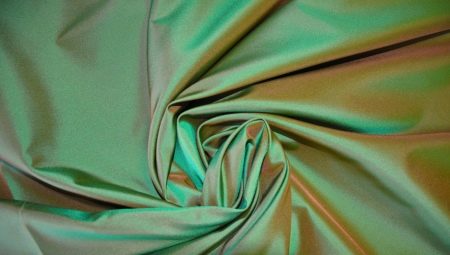
Taffeta is a fairly dense fabric with a mysterious glossy shimmer. Initially, the material became widespread in Persia, where it was used to make clothes for nobles, gradually the fabric hit the shelves of European countries, where it immediately conquered the royal courts. In Russia, the material has been used since the 15th century, in those days smart caftans were sewn from it and fur coats were trimmed.
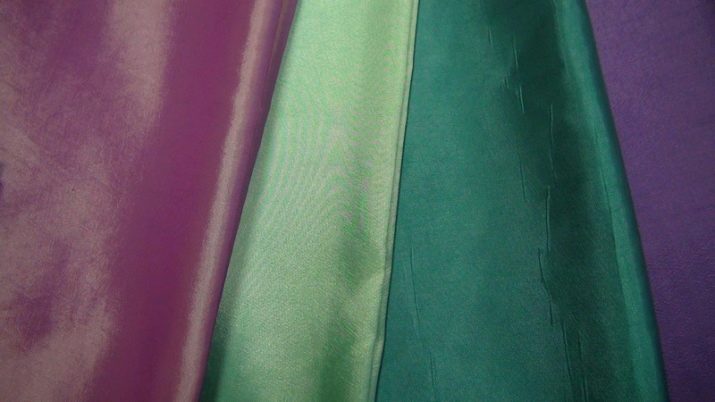
History
Nobody knows the exact date of the invention of this dense material, but the facts unequivocally indicate that it appeared in Persia, where it also received its name, which translates as "woven cloth".
With the advent of the Great Silk Road, caravans loaded with taffeta entered the countries of the Old World, where the material was immediately appreciated by the court nobles.
Taffeta is made from twisted threads by means of plain weaving. Until 1990, the material was woven exclusively by hand, but at the end of the last century in the Indian town of Bangalore, a special machine was created that made it possible to create taffeta, which greatly facilitated the production of the material. That is why today India is considered the leader in the production and sale of taffeta throughout the world.

Composition
Initially, taffeta was made from silk and cotton fibers, which greatly increased the cost of the fabric. Only the richest and noblest people with high social status could afford clothes made from such a canvas. However, technologies do not stand still, in the era of the total spread of polymer materials, taffeta began to be made from synthetic raw materials, thanks to which the material became available and additionally acquired special wear resistance and a variety of shades and textures.
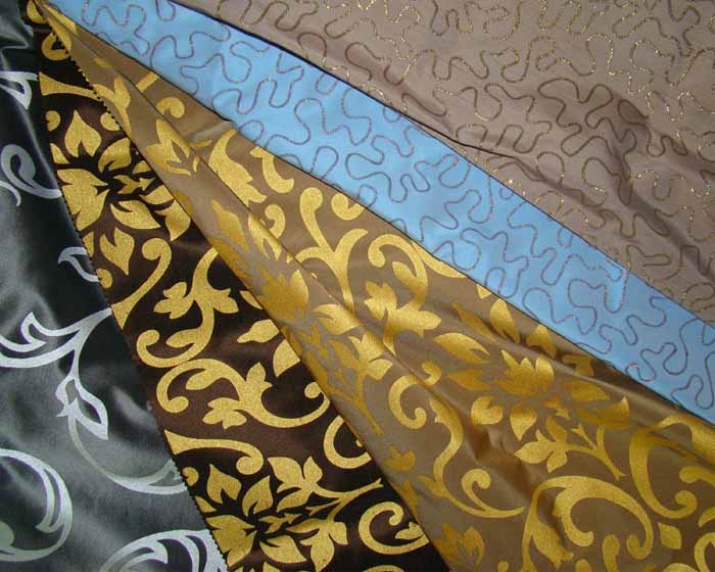
The consumer properties of natural and synthetic taffeta differ, each of the options has its own advantages and disadvantages.
Silk taffeta is made from silk threads and is characterized by increased hygroscopicity, wear resistance and hypoallergenicity. Products made from such fabric are very expensive, but they also look the same - each item made of silk taffeta literally enchants with its noble radiance, tenderness and softness.
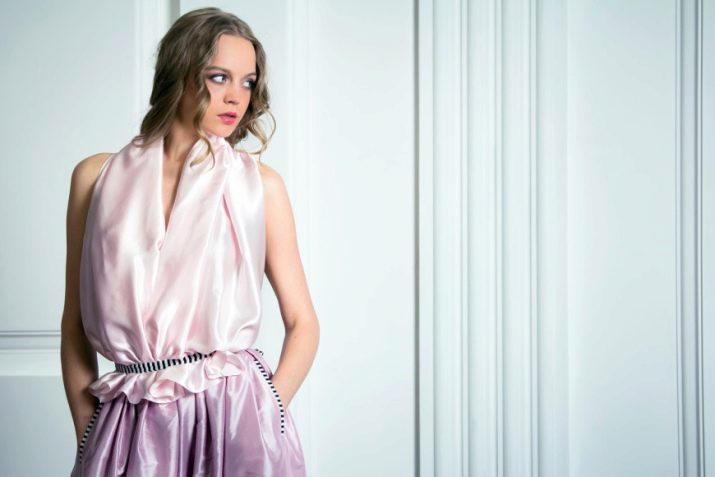
Cotton taffeta is made, as the name suggests, from cotton, therefore such products are very comfortable and pleasant for the body. The fabric does not cause an allergic reaction, it allows air to pass freely and does not absorb moisture. At the same time, the cost of things is much cheaper than sewn from silk cloth.
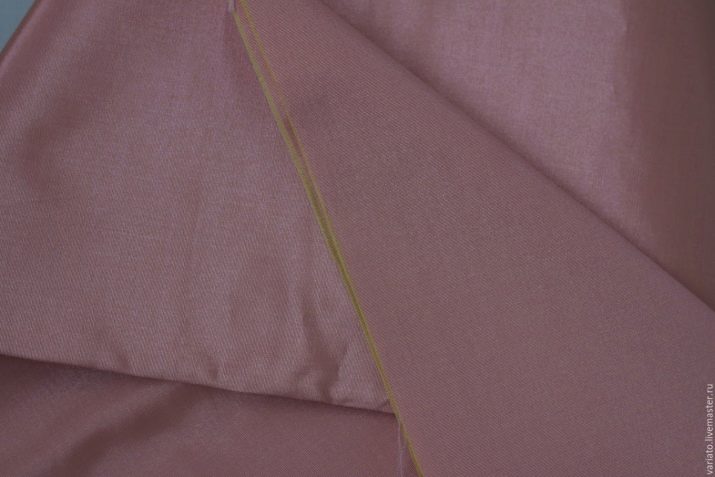
Viscose taffeta is made from artificial viscose, has a delicate flowing sheen and softness. The cost of such a material is low, although it was not without its drawbacks - products made of viscose taffeta are extremely short-lived, and the fabric tears quite quickly when wet.
Acetate taffeta - This fabric is made from polyester and is used to create clothing designed for everyday wear.

Specifications
The peculiarity of taffeta is that it is made of threads tightly twisted with each other, which have a characteristic plain weave. Due to a special production technology, the matter comes out very thin, but at the same time dense and keeps the desired shape very well.
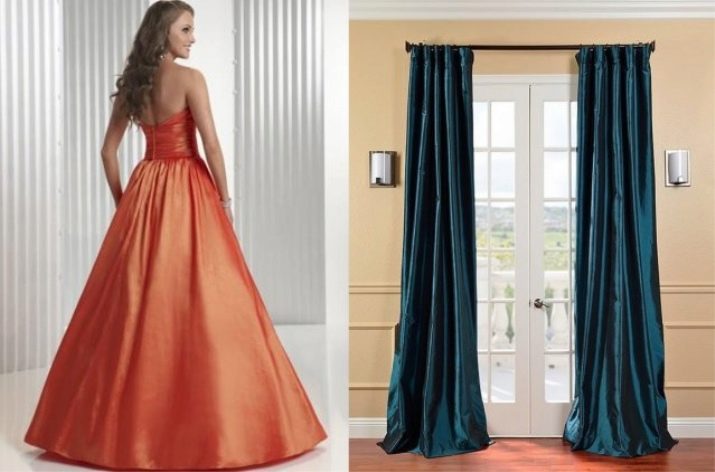
The main characteristics of the fabric depend on the raw material from which the fabric is made; nevertheless, there are general operational characteristics common to all types of taffeta, regardless of the original threads, shade and texture. Consider their description:
- the canvas is of high density;
- the fabric is very light;
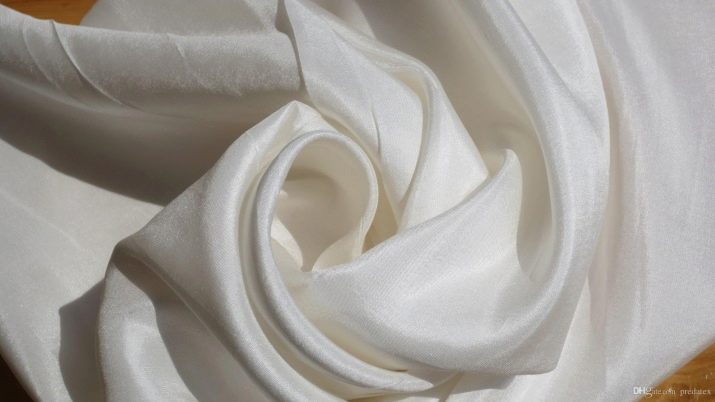
- does not absorb moisture, but repels it;
- characterized by a glossy shine and pleasant appearance;
- holds its shape, can be draped with stylish folds and beautiful folds.
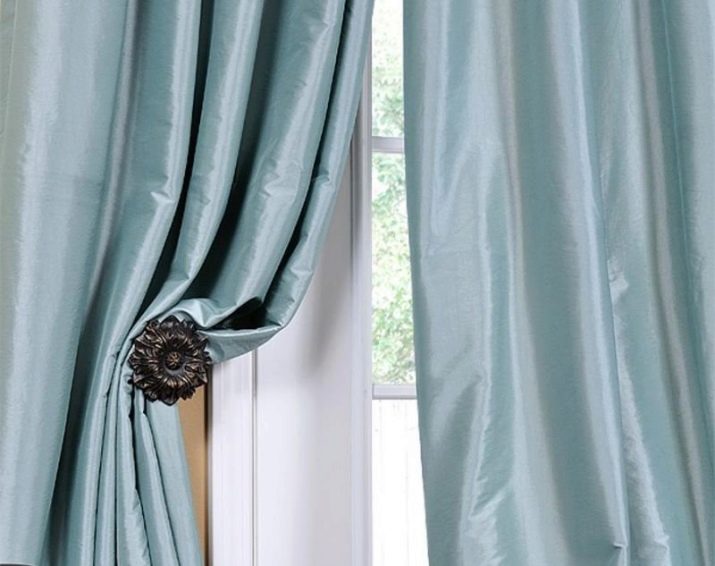
Among the shortcomings, it should be noted:
- gives a fairly significant shrinkage, with improper washing, you can lose up to 10% of the length of the product;
- when cutting and sewing, it crumbles very much;
- when in contact with a thick needle, the threads move apart and shift to the side;
- wrinkles quickly, forms hard-to-smooth creases.

The disadvantages of artificial canvas include:
- average thermal protection;
- lack of ability to repel dirt;
- fading of fibers over time.
Synthetic taffeta can also become electrified and deformed when exposed to direct sunlight and high temperatures.

Views
Depending on the color, the following types of taffeta are distinguished:
- plain canvas - in the production of such fabric, a monochrome dyed thread is used both for the warp and for the weft;
- shangjan - weaved from threads of two colors, thanks to this technology, overflows appear on the finished fabric;
- printed Is a fabric with a pattern or a beautiful pattern, which is applied using a special machine.
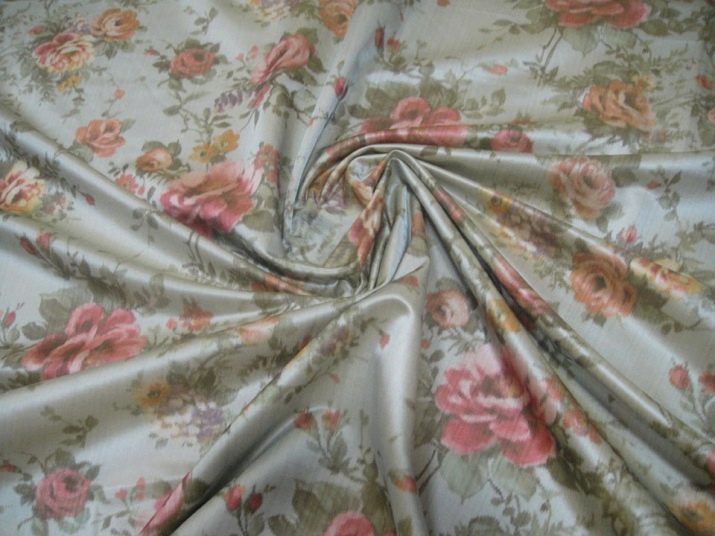
The texture of taffeta also differs.
- Smooth - has a flat surface without various roughness. Typically, it is used to make home textiles and casual wear.
- Harvested - it is obtained by exposing the woven material to high temperatures, characterized by specific creases and folds, and they are not smoothed, but at the same time they do not deform. This fabric is optimal for making festive costumes and fancy dresses.

Scope of application
The area of use of natural and artificial taffeta is multifaceted.
The fabric is primarily used to make clothing. Moreover, dresses, trousers and blouses are made from it both for everyday wear and evening dresses. Taffeta has the ability to keep its shape, it is dense and standing, therefore stage and carnival costumes, as well as wedding dresses, are often created from it.
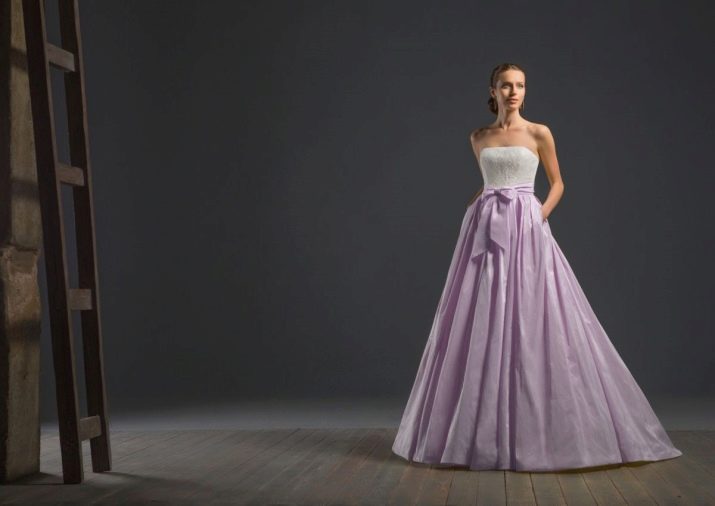
The canvas goes well with lace, guipure, braid, gives products a noble shimmer and mysteriously rustles when walking.
Synthetic materials are also used for sewing gymnastic leotards - they have great stretch, so they are ideal for athletes.
Home textiles are very often sewn from taffeta, the fabric is widely used for sewing curtains and curtains, since it drapes perfectly and does not allow sunlight to pass through at all. Natural and synthetic fabrics make beautiful bed duvets as well as decorative covers and cushions.

Finally, taffeta is often used to create upholstery for furniture. As a rule, synthetic varieties of matter are used for this purpose. Thanks to their unusual decor, sofas and armchairs covered with taffeta give the room a certain oriental flavor and bring a touch of luxury and aristocracy to the atmosphere.

Care
Taffeta is undoubtedly an expensive material, but at the same time it is extremely capricious. He needs special care, otherwise the appearance of the thing may be hopelessly spoiled.
If you purchased a taffeta product for yourself, regardless of what raw material it is made from, you should adhere to some rules for caring for the material.
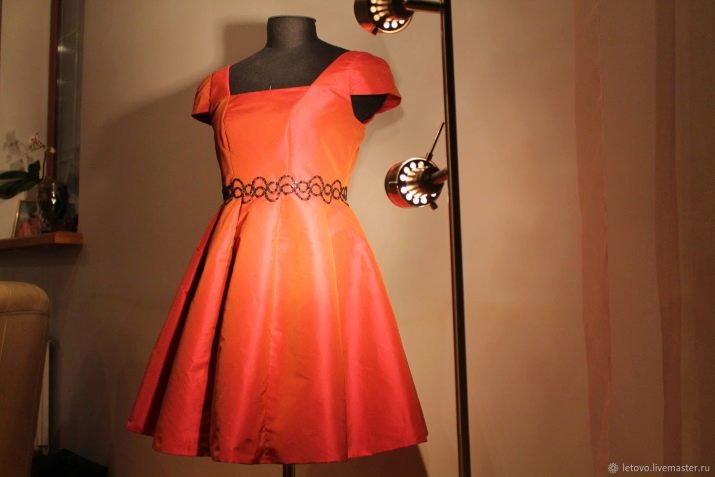
Taffeta is washed by hand or in a typewriter at a temperature not exceeding 30 degrees using means for delicate cleaning of the fabric; it is best to use capsules rather than powder.
Twisting and intensive wringing out of the fabric is not allowed - after washing, the product must be wrapped in a soft cloth, which will absorb all excess moisture, after which the item is placed on a horizontal surface and dried away from batteries and other heat sources.

You can iron taffeta clothes only through a damp cotton cloth, in this case, the heating of the iron is set to a minimum level and is obligatory only from the wrong side. If you have silk taffeta, you cannot use water spray before ironing.
Taffeta clothes are stored on hangers and, best of all, in covers.

Attention: wrinkled taffeta products are best dry cleaned. Household washing can cause irreparable damage to them, and ironing of such material is strictly prohibited.
For a description of the fabric, see the next video.








